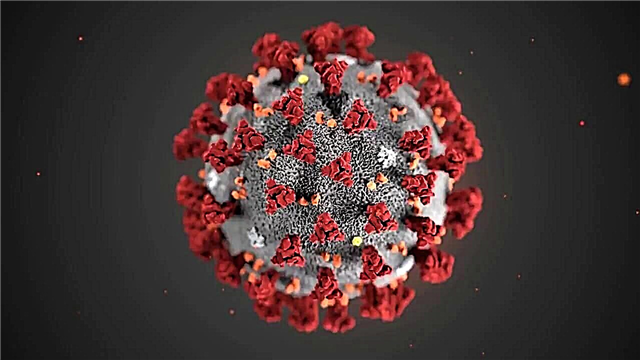Rivers are the main source of life, because fresh water is crucial for the survival of the flora and fauna on Earth. However, many rivers are so polluted that they resemble giant floating garbage chutes. According to statistics, 90% of the plastic that enters the oceans "comes" from the rivers.
It’s good that the articles do not transmit smells, because in our ranking are collected the dirtiest rivers in the world. They are visible evidence of the adverse effects of a thoughtless attitude to nature.
10. Volga, Russia
 We will start anti-rating from the river, which is located in our country. This is not the first year that it has been ranked first in the list of the dirtiest rivers in Russia, and this is not an allegation, but the opinion of experts from the Ministry of Natural Resources and Ecology. About 38% of all Russian polluted effluents enter it.
We will start anti-rating from the river, which is located in our country. This is not the first year that it has been ranked first in the list of the dirtiest rivers in Russia, and this is not an allegation, but the opinion of experts from the Ministry of Natural Resources and Ecology. About 38% of all Russian polluted effluents enter it.
In 2018, Rosprirodnadzor conducted a survey of the Volga coast with a length of 7,500 km. And experts found that the biggest contribution to the slow murder of the river was made not by industrial enterprises, but by organizations from the housing and utilities sector. The total amount of damage caused to the Volga has exceeded 1 billion rubles.
One of the longest Russian rivers is seriously ill. And in 2019, the authorities plan to allocate 1.7 billion rubles for the implementation of the project to improve it.
9. Matanza or Riachuelo, Argentina
 It is the most polluted river in South America. This is due to industrial enterprises that dump sewage into the river day after day. The main type of pollution is volatile organic compounds, in particular, toluene.
It is the most polluted river in South America. This is due to industrial enterprises that dump sewage into the river day after day. The main type of pollution is volatile organic compounds, in particular, toluene.
In addition, Matanza is unofficially called the “slaughterhouse river,” since many tanneries are located along it. Guess where they dump the waste? According to the World Health Organization, people living near the river are twice as likely to get cancer than people in other parts of the country.
8. Buriganga, Bangladesh
 For a country that is heavily dependent on a single river as a source of livelihood, Bangladesh is too frivolous (if you choose the mildest language) refers to the Buriganga River. Currently, it is the burial place for all types of pollutants, including industrial and household waste, sewage, medical waste, dead animals, plastics and so on.
For a country that is heavily dependent on a single river as a source of livelihood, Bangladesh is too frivolous (if you choose the mildest language) refers to the Buriganga River. Currently, it is the burial place for all types of pollutants, including industrial and household waste, sewage, medical waste, dead animals, plastics and so on.
About 80% of wastewater discharged into the river is not treated. The capital of Dhaka alone emits 4,500 tons of solid waste every day in Buriganga! It is not surprising that this river is one of the most toxic reservoirs on the planet.
7. Mississippi, USA
 The main river of North America's largest river system has suffered enough from people to be considered one of the 10 most polluted rivers in the world. Scientists call it one of the most polluted ecosystems on the planet. And the massive “dead zone” in the Gulf of Mexico is a prime example of their case.
The main river of North America's largest river system has suffered enough from people to be considered one of the 10 most polluted rivers in the world. Scientists call it one of the most polluted ecosystems on the planet. And the massive “dead zone” in the Gulf of Mexico is a prime example of their case.
More than 5.7 million kilograms of toxic chemicals, such as polychlorinated biphenyls, mercury, fertilizers, etc., are dumped into the Mississippi in just one year. And the main pollutants are benzene, mercury and arsenic.
The level of toxins in the water of the Mississippi makes it dangerous not only for animals, but also for people who consume it.
6. Marilao, Philippines
 Millions of Philippines who depend on the Marilao River for drinking and farming are currently at serious health risks due to high levels of water pollution.
Millions of Philippines who depend on the Marilao River for drinking and farming are currently at serious health risks due to high levels of water pollution.
Most of the pollutants entering the river are waste generated at tanneries and gold processing plants. Now a significant part of the river is a giant dump of inorganic materials such as disposable plastic bags, cans and bottles. And the level of lead in the water is so high that it kills fish.
Like the Sarno River in Italy, the Marilão River also tends to flood, which leads to water pollution spreading to neighboring lands.
5. Yellow River, China
 This river, whose waters have a yellowish tint, is the place where many enterprises dump waste. The UN Environment Program report indicates that in 1996, 4.29 billion tons of industrial and sewage was discharged into the Yellow River. This makes the Yellow Water too toxic even for agriculture.
This river, whose waters have a yellowish tint, is the place where many enterprises dump waste. The UN Environment Program report indicates that in 1996, 4.29 billion tons of industrial and sewage was discharged into the Yellow River. This makes the Yellow Water too toxic even for agriculture.
Nevertheless, people still take water from the Yellow River and use it for bathing, drinking and other household purposes. It is because of this that in the 9 provinces of China through which the Yellow River flows, there is an increase in diseases transmitted through water. Recently, the Chinese authorities have been trying to dissuade the population from drinking water from this river, since it is unsafe for human or animal consumption.
4. Sarno, Italy
 This is perhaps the most polluted river on the European continent. The source of Sarno is clean and safe to drink. But as you move away from it, the amount of industrial and agricultural waste dumped into the river increases. And all this muck goes through the Gulf of Naples straight to the Mediterranean Sea.
This is perhaps the most polluted river on the European continent. The source of Sarno is clean and safe to drink. But as you move away from it, the amount of industrial and agricultural waste dumped into the river increases. And all this muck goes through the Gulf of Naples straight to the Mediterranean Sea.
3. Yangtze, China
 One of the largest rivers in the world is also one of the worst when it comes to the highly competitive group of the most polluted rivers in the world. The lethal combination of overpopulation (480 million people live in the river basin), a fully consumer-oriented lifestyle, and poor waste management system led to about 333,000 tons of plastic waste being dumped into the East China Sea every year.
One of the largest rivers in the world is also one of the worst when it comes to the highly competitive group of the most polluted rivers in the world. The lethal combination of overpopulation (480 million people live in the river basin), a fully consumer-oriented lifestyle, and poor waste management system led to about 333,000 tons of plastic waste being dumped into the East China Sea every year.
2. Ganges, India
 The fact that this is the most sacred river in India does not prevent it from being one of the dirtiest on the planet. Moreover, it is the main source of water for 40% of the country's population (which is over 500 million people).
The fact that this is the most sacred river in India does not prevent it from being one of the dirtiest on the planet. Moreover, it is the main source of water for 40% of the country's population (which is over 500 million people).
Due to the high content of sewage, chemicals and handicraft waste, the Ganges water used for domestic purposes, such as drinking, bathing or cooking, is life threatening.
And here you can sometimes see a human corpse. On the banks of the Ganges, bodies are cremated and the ashes above water are dispelled, but many poor Hindus cannot afford the luxury of burning the deceased on wood. Therefore, they are limited to setting fire to the raft on which the deceased lies, and letting him on his last journey along the sacred river.
1. Chintarum, Indonesia
 For hundreds of years, this river, flowing near the Indonesian capital Jakarta, has contributed to the development of agriculture and fishing. It was the main source of water supply and even electricity production in West Java.
For hundreds of years, this river, flowing near the Indonesian capital Jakarta, has contributed to the development of agriculture and fishing. It was the main source of water supply and even electricity production in West Java.
However, a long neighborhood with 5 million people (about as many Indonesians live in the Chintarum basin) brought the river into terrible condition. It is overflowing with industrial and household waste dumped into it. Here you can find almost any kind of pollutants, such as plastic products, rubber, glass, metal, paints, chemicals, etc.
In many places of Chintarum, the pollution level is so high that the surface of the water is not visible at all under the layers of garbage.
According to tests, the mercury content in the river is 100 times higher than the permissible level, and the level of lead is 1000 times. Due to such an unimaginable scale of environmental disaster, the river is considered the dirtiest in the world.












